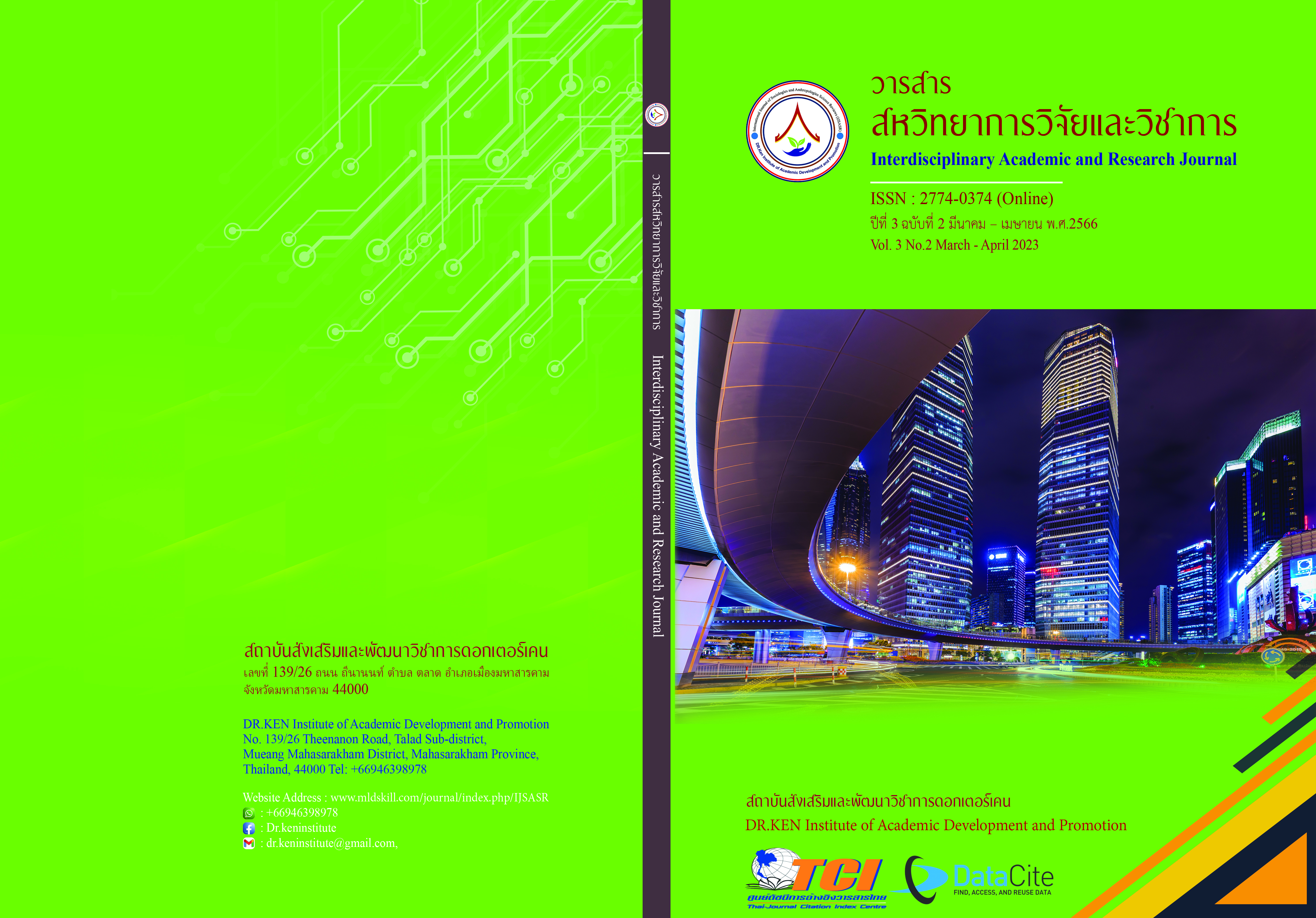Takraw: From Folk Game to the International Sport
DOI:
https://doi.org/10.14456/iarj.2023.88Keywords:
Folk Game; , The International Sport; , TakrawAbstract
From past to present, Takraw evolution has been developed continuously and is also well-known as an international sport instead of folk game. According to several pieces of evidence, It is a sport that has existed throughout Thai history since the Prehistoric era, the Sukhothai era, the Ayutthaya era and the Rattanakosin era, and modern history. Nowadays, Takraw has developed into many tournaments and competition styles. Takraw is mainly divided into two types as Sepak-takraw and Rhythmic Sepak-takraw. Rhythmic Sepak-takraw is an aesthetic type of Takraw. Players need to show their skills as well as a variety of playing styles. The ball is not allowed to fall. Sepak-takraw is a competitive type of Takraw. It is played with a net which is divided into the defensive and offensive side. Sepak-takraw competition consists of Men and Women Single Regu, Men and Women Team, Men and Women Double, Beach Takraw, Beach Team, Beach Single Regu, Men and Women Quad (4 people). While the rhythmic Sepak-Takraw player is required to show the right styles to earn the point. Rhythmic Sepak-Takraw competition consists of Hoop Takraw (Traditional Thai rules), International Hoop Takraw, Chinlone Takraw, and Sepak-takraw Circle Game Rules and Regulations. As Takraw is getting its place as an international sport, it needs to continuously develop its rule and competition styles. The International Takraw Association should develop an international rule as the international tournaments need an acceptable regulation. This is the first step to Olympic game.
References
กฤชญา พุ่มพิน. (2565). GAS 3504 ตะกร้อ. กรุงเทพฯ: สำนักพิมพ์มหาวิทยาลัยรามคำแหง.
โกสินทร์ วิสุทธิ์ศรี. (2552). ผลการใช้แบบฝึกทักษะกีฬาตะกร้อสำหรับนักเรียนมัธยมศึกษาตอนต้น. วิทยานิพนธ์ศึกษาศาสตรมหาบัณฑิต มหาวิทยาลัยขอนแก่น.
จตุพันธ์ ปัญจมนัส. (2556). การวิเคราะห์แบบแผนการเสิร์ฟของกีฬาเซปักตะกร้อในการแข่งขันชิงถ้วยพระราชทานคิงส์คัพ ครั้งที่ 26. วิทยานิพนธ์หลักสูตรวิทยาศาสตรมหาบัณฑิต, จุฬาลงกรณ์มหาวิทยาลัย.
จรินทร์ ธานีรัตน์. (2507). นันทนาการชุมชน. กรุงเทพมหานคร: สำนักพิมพ์โอเดียนสโตร์.
บุญยงค์ เกศเทศ. (2547). ศิลปะการเล่นตะกร้อ. พิมพ์ครั้งที่ 3. กรุงเทพมหานคร: สำนักพิมพ์โอเดียนสโตร์.
ปิยศักดิ์ มุทาลัย. (2550). ประวัติกีฬาเซปักตะกร้อ. กรุงเทพฯ: สมาคมตระกร้อแห่งประเทศไทย
พระบาทสมเด็จพระพุทธเลิศหล้านภาลัย อิเหนา (2514). บทละครเรื่องอิเหนา ฉบับหอสมุดแห่งชาติ. พิมพ์ครั้งที่ 11. กรุงเทพฯ : ศิลปาบรรณาคาร.
ศุภวรรณ วงศ์สร้างทรัพย์. (2560). หลักและวิธีสอนกีฬาตะกร้อ. ภาควิชาพลศึกษาและกีฬา คณะศึกษาศาสตร์และพัฒนศาสตร์ มหาวิทยาลัยเกษตรศาสตร์.
สมเกียรติ สูงสถิตานนท์. (2527). การสร้างแบบทดสอบความสามารถในการเล่นกีฬาเซปักตะกร้อสำหรับนักศึกษาระดับอุดมศึกษา. ปริญญานิพนธ์หลักสูตรศึกษาศาสตรมหาบัณฑิต, มหาวิทยาลัยศรีนคริทร วิโรฒประสานมิตร.
สมชาย ยิ้มน้อย. (2535). ประวัติและพัฒนาการของกีฬาตะกร้อในประเทศไทย.กรุงเทพมหานคร : ฐานข้อมูลวิทยานิพนธ์ไทย.
สหพันธ์ตะกร้อแห่งเอเชียรับรองโดยสหพันธ์ตะกร้อนานาชาติ. (2551). กีฬาเซปักตะกร้อ อนาคต ปัจจุบัน อดีต. กรุงเทพ: จัดทำโดยสหพันธ์ตะกร้อแห่งเอเชียรับรองโดยสหพันธ์ตะกร้อนานาชาติ
สิรภัค ชีวะนอรรถ. (2565). รู้จัก “Teqball” กีฬาลูกผสม “ตะกร้อ+ปิงปอง+ฟุตบอล” กับอีกหนึ่งการปลดล็อกศักยภาพนักกีฬาไทย. Retrieved from: https://www.creativethailand.org/view/article-read?article_id=33638
อุทัย สงวนพงศ์. (2549). สนุกกับเซปักตะกร้อ. กรุงเทพมหานคร: สำนักพิมพ์พัฒนาคุณภาพวิชาการ (พว.).
Downloads
Published
How to Cite
Issue
Section
License
Copyright (c) 2023 กฤชญา พุ่มพิน, ศุภวรรณ วงศ์สร้างทรัพย์

This work is licensed under a Creative Commons Attribution-NonCommercial-NoDerivatives 4.0 International License.
Copyright on any article in the Interdisciplinary Academic and Research Journal is retained by the author(s) under the under the Creative Commons Attribution-NonCommercial-NoDerivatives 4.0 International License. Permission to use text, content, images, etc. of publication. Any user to read, download, copy, distribute, print, search, or link to the full texts of articles, crawl them for indexing, pass them as data to software, or use them for any other lawful purpose. But do not use it for commercial use or with the intent to benefit any business.
















.png)


